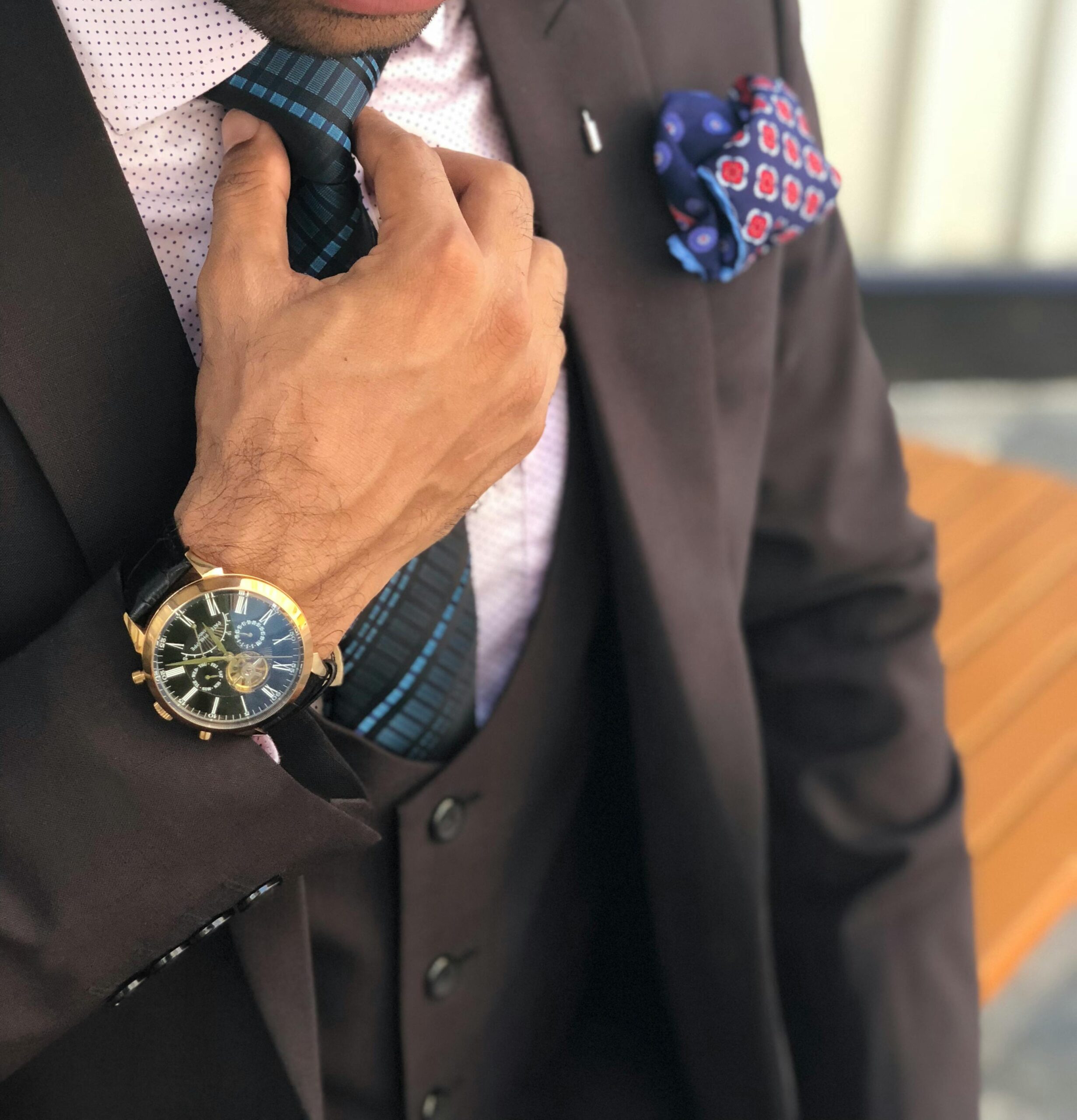When it comes to custom dress shirts, every detail matters. From the fabric to the fit, each element is meticulously crafted to create a garment that is uniquely yours. Among these details, the collar often stands out as a defining feature. Not only does it frame your face, but it also sets the tone for the entire shirt. Whether you prefer a classic look or something more contemporary, the collar is a key component that can make or break your style. In this guide, we delve into the world of custom shirt collars, exploring the various styles, their characteristics, and how to choose the perfect one for your needs. Discover how the right collar can elevate your look, offering both functionality and a touch of personal flair.
Basic Shirt Collar Terminology
 We’ll be using some industry terminology going forward, here are a few you’ll see in this article:
We’ll be using some industry terminology going forward, here are a few you’ll see in this article:
Points: The parts of the collar that surround the collar button. With the collar buttoned, the bottoms of the points will make contact with your clavicle area.
Spread: The distance between the bottoms of the collar points. The menswear industry uses many different terms to describe the looks of different spreads. “Point” collars typically have points that are close together. The term “spread collar” refers to anything with a medium-to-large degree of spread. “Cutaway” or “extreme cutaway” are terms you’ll see that refer to spreads around the 180-degree area: these are highly stylized and fashion-forward.
Thankfully, things aren’t actually that involved. Simply think of collar spread as existing on a continuum; nearly-closed collars are on one end, and wide-open collars are on the other. Collars simply have a degree of spread, not arbitrary names to indicate a level of spread.
Tie Space: Distance between the collar points’ tops. What spread is to the bottoms of collar points, tie space is to the tops of collar points.
Band: The part of the collar whose inside makes direct contact with your neck.
Leaf: The part of the collar that’s folded over and would cover a tie if you wore one.
Shirt Collar Significance
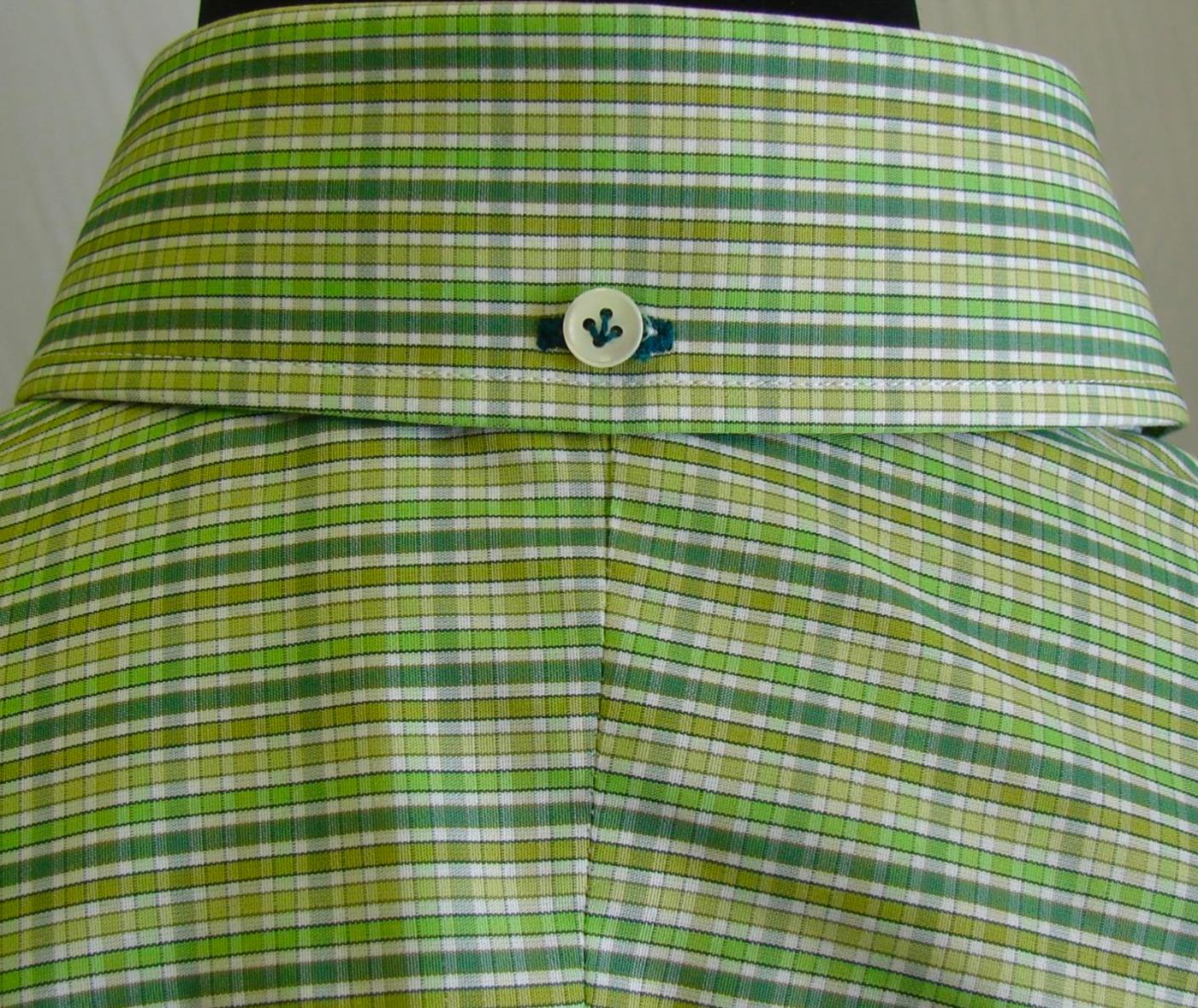 We allude to this in the home page of this series, but let’s dive a bit deeper here: why is a shirt’s collar so important?
We allude to this in the home page of this series, but let’s dive a bit deeper here: why is a shirt’s collar so important?
Short answer: it directly borders your face, and your face is the most important part of any outfit you’ll ever wear. Think about your face as a picture and your shirt collar as the frame. You wouldn’t put a 5×7 photo in an 8×10 frame, or even worse, the other way around, would you? Your face is your most expressive body part, and other humans look at it when deciphering the messages you convey. As such, it behooves you to pay a lot of attention to that area.
Now that we know how important a proper collar is, how do you know which is best for you?
Custom Shirt Collars & Your Face – A Balancing Act
The best-looking shirt collars balance the wearer’s face shape. Men with more length than width in their faces should choose collars on the wider end of the spectrum. This collar width will balance their faces’ length, whereas a narrower spread will accentuate that length and make him appear lanky and out of balance.
The opposite is true for men with more width than length in their faces, or who have round or square faces. These men should opt for narrower spreads so as to not widen their faces unnecessarily.
 Your face’s shape is one of your immutable traits, and without spending thousands of dollars on cosmetic surgery, you can’t change it. We don’t mean to minimize the work that cosmetic surgeons do, please don’t get us wrong. We just feel that it makes more sense – financial and otherwise – to make shirts with a carefully selected collar that works with the cards genetics dealt you.
Your face’s shape is one of your immutable traits, and without spending thousands of dollars on cosmetic surgery, you can’t change it. We don’t mean to minimize the work that cosmetic surgeons do, please don’t get us wrong. We just feel that it makes more sense – financial and otherwise – to make shirts with a carefully selected collar that works with the cards genetics dealt you.
Custom Collar Anatomy
It’s rare that we discuss collar details other than spread with clients unless they’re very particular about the design. Still, there’s more that goes into a custom shirt collar than a neck measurement and the spread that looks best. Below are the other considerations we make – often behind the scenes – when determining your shirt collar:
Collar Points
The length of the collar point itself is a way to balance the wearer’s frame, and also lend casualness or dressiness to a shirt. Note that wider spread collars require additional length so they sit properly when buttoned.
Front Band
 The height of the front band is adjustable, again to balance the wearer’s face shape. If you have a long-ish neck, a higher band will make it appear less so. Conversely, shorter necks need shorter bands so they don’t disappear under the collar.
The height of the front band is adjustable, again to balance the wearer’s face shape. If you have a long-ish neck, a higher band will make it appear less so. Conversely, shorter necks need shorter bands so they don’t disappear under the collar.
Back Leaf Height
The back of a collar’s height is adjustable like the front bands, and for all the same reasons.
Tie Space
Do you wear ties? If so, do you prefer larger or smaller knots? Adjusting the width of your tie space is key to accommodating the knots you like while balancing your face shape.
Common Collar Styles For Men
There are nearly limitless collar styles that can be designed based on the six elements above. A few common ones (and some not-so-common ones) are below.
Turndown Collar
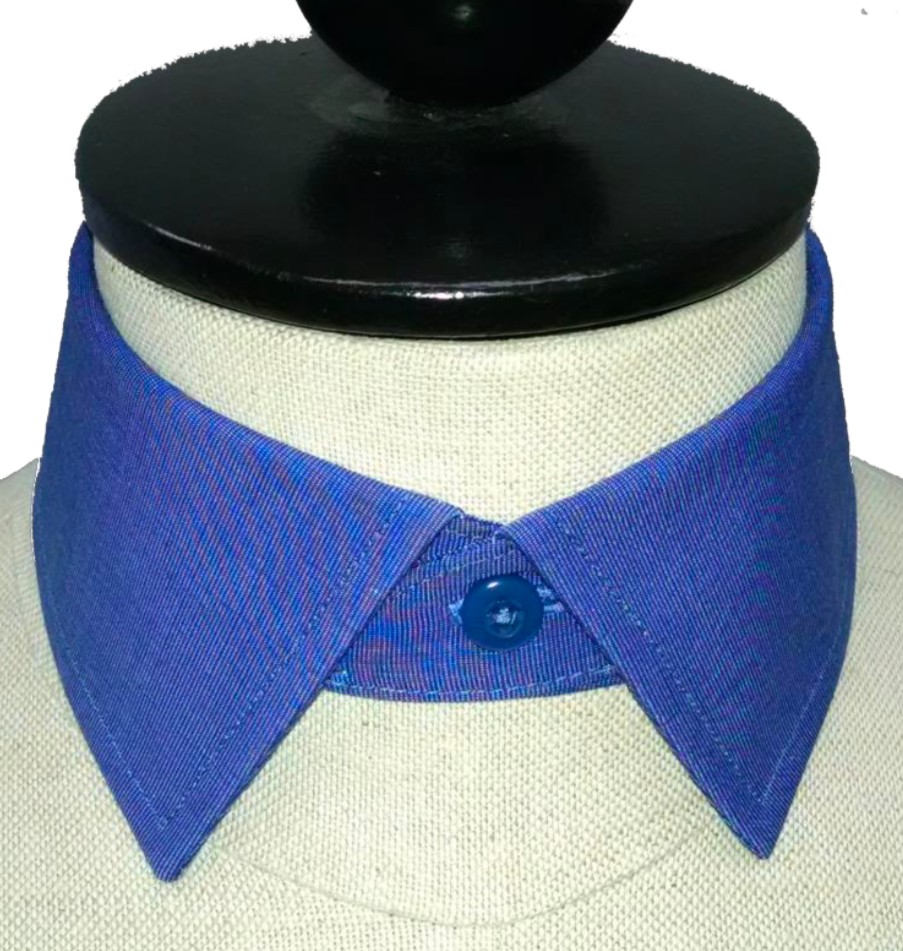 The most common collar style, this is what most of us think of when we picture a “dress shirt.” Turndown collars are just that: collars folded over themselves and “turned down” for the finished look. Available in any spread you can imagine, their points can be straight, curved, and take any kind of decoration. Depending on the cloth, it can be dressed down with shorts and flip-flops or dressed up with a tuxedo and bow tie.
The most common collar style, this is what most of us think of when we picture a “dress shirt.” Turndown collars are just that: collars folded over themselves and “turned down” for the finished look. Available in any spread you can imagine, their points can be straight, curved, and take any kind of decoration. Depending on the cloth, it can be dressed down with shorts and flip-flops or dressed up with a tuxedo and bow tie.
A turndown collar is always called such until buttons are added to it, which turns it into a…
Button-Down Collar (“BD”)
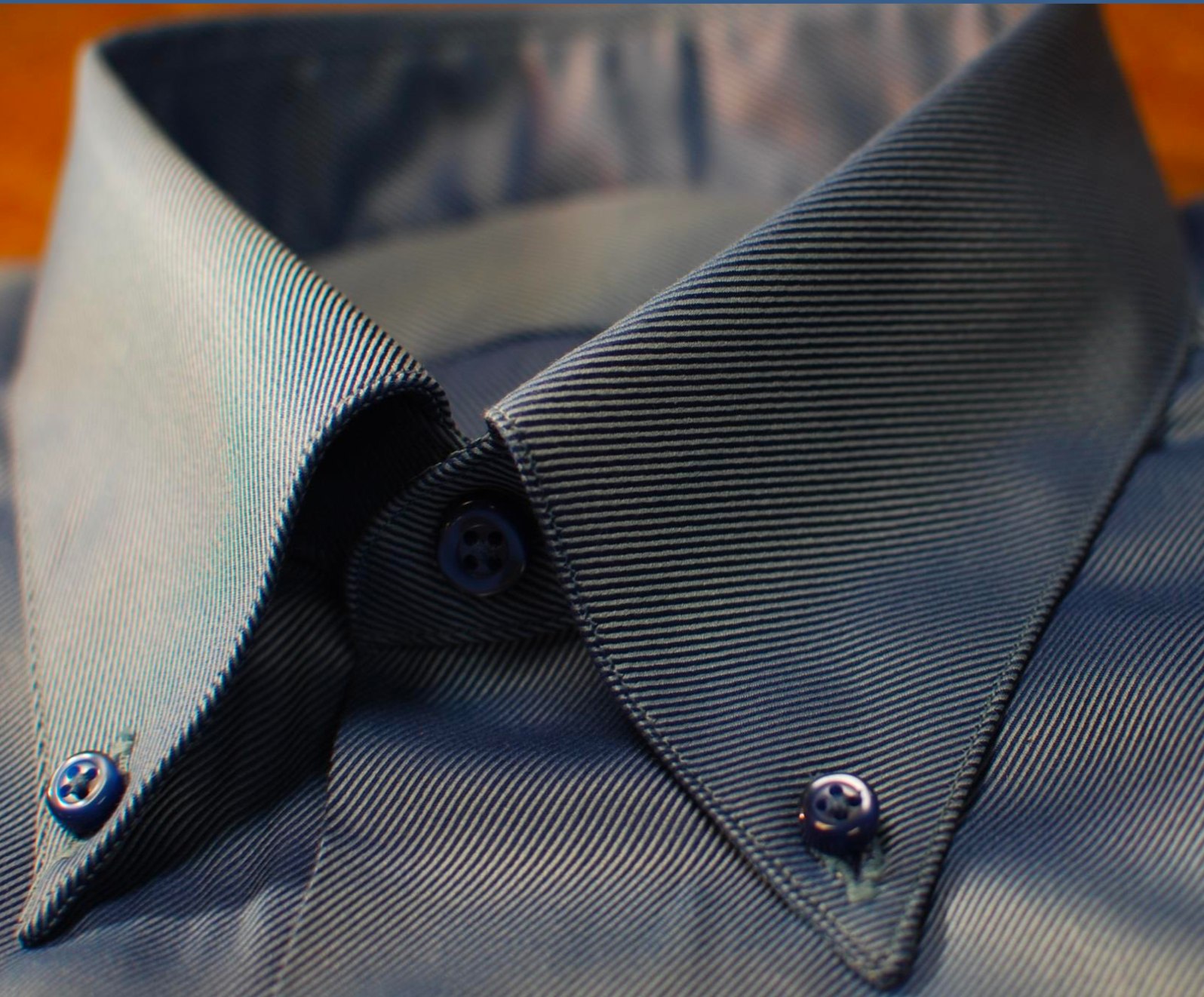 Button-down collar shirts are the one thing that the United States has contributed to the menswear canon – just about everything else comes from the British Isles or Italy. Back in 1896, Brooks Brothers’ then-owner, John, was in England watching a polo match. This is where he noticed the players’ collars were all buttoned down to their shirts, eliminating the visual distraction of them flying in their faces. He took the idea back to his design team, and “polo shirts” soon became all the rage.
Button-down collar shirts are the one thing that the United States has contributed to the menswear canon – just about everything else comes from the British Isles or Italy. Back in 1896, Brooks Brothers’ then-owner, John, was in England watching a polo match. This is where he noticed the players’ collars were all buttoned down to their shirts, eliminating the visual distraction of them flying in their faces. He took the idea back to his design team, and “polo shirts” soon became all the rage.
The button-down collar makes for a decidedly casual look. Too laid back for tuxedos and double-breasted suits, it’s typically found within the confines of casual garb. Plaid versions worn with jeans are quite popular, and a button-down collar with a navy blazer and grey trousers is always a can’t miss combination.

In the custom world, we can make any collar style into a button-down. The classic Brooks Brothers style uses a long collar point that forces the collar to curve in a sort of upside-down U-shape under the face. This curvature is referred to as a “collar roll” and is highly desired amongst purists.
Buttondown Collars & Ties – Acceptable or No?
Though we sometimes see men wearing button-down collars with single-breasted suits, we generally advise against it. While a BD with a suit and tie is a classic preppy look from the Northeastern US, only turndown collars provide the panache a good custom suit demands.
If you like the buttondown-collar-with-a-tie look, try it with a casual ensemble in a laid-back setting – think cotton pants, loafers, and a casual sport coat (if any at all). Just don’t show up to a job interview wearing this.
Wing Collar
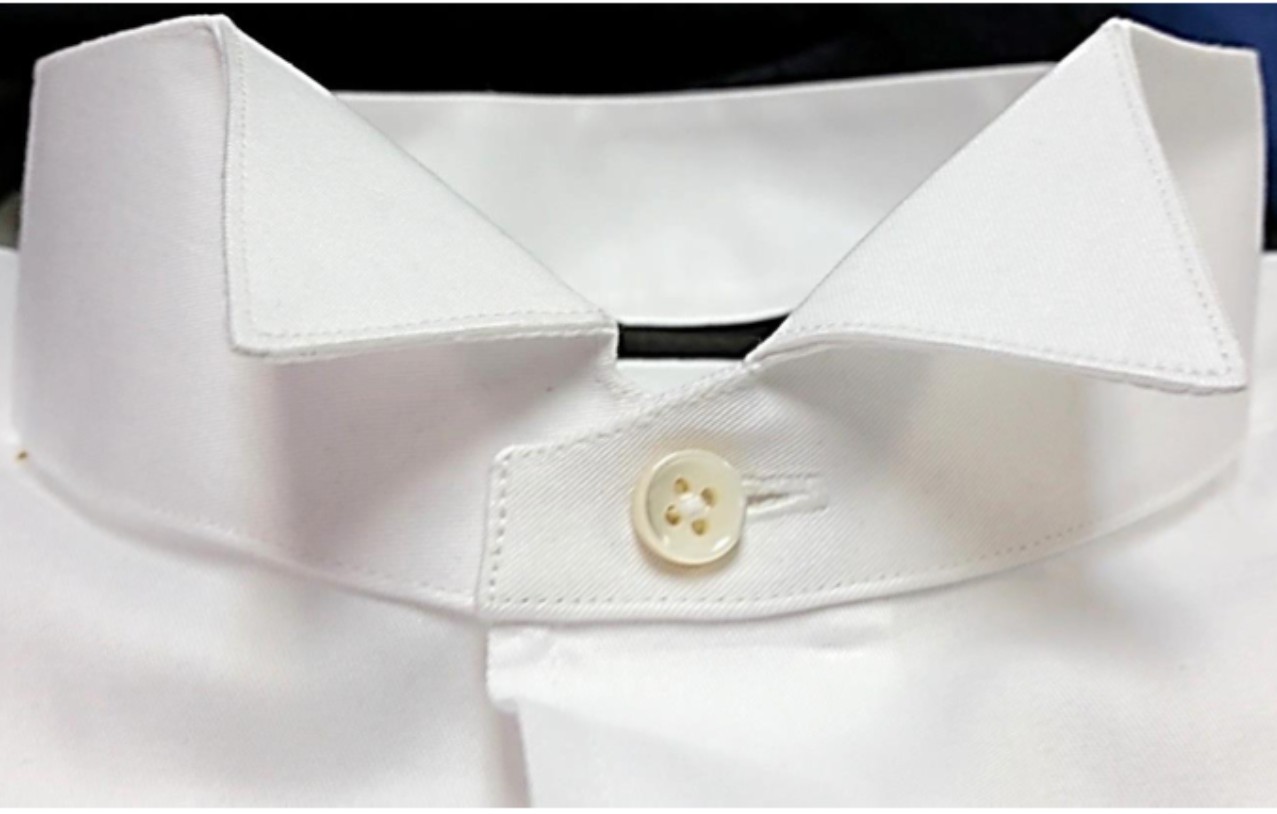 Though turndown collars are correct and quite popular for tuxedo shirts, the original tux shirt sported a wing collar and can still be custom-made today. So named because the collar leaf creates little wing shapes in the front, it’s crucial that your bow tie rest in front of them, not behind them.
Though turndown collars are correct and quite popular for tuxedo shirts, the original tux shirt sported a wing collar and can still be custom-made today. So named because the collar leaf creates little wing shapes in the front, it’s crucial that your bow tie rest in front of them, not behind them.
It’s best to avoid wearing long ties with wing collars unless you’re going for vintage morning dress – otherwise, it can appear a bit dated. A wing collar with an ascot is a very traditional choice for morning clothes, and it should always take a bow tie when worn with a tux.
Should you wear a wing collar shirt with your tuxedo, or a simple turndown collar? Either is correct, but we encourage you to try a wing collar. Classics never fade for a reason.
Eton Collar
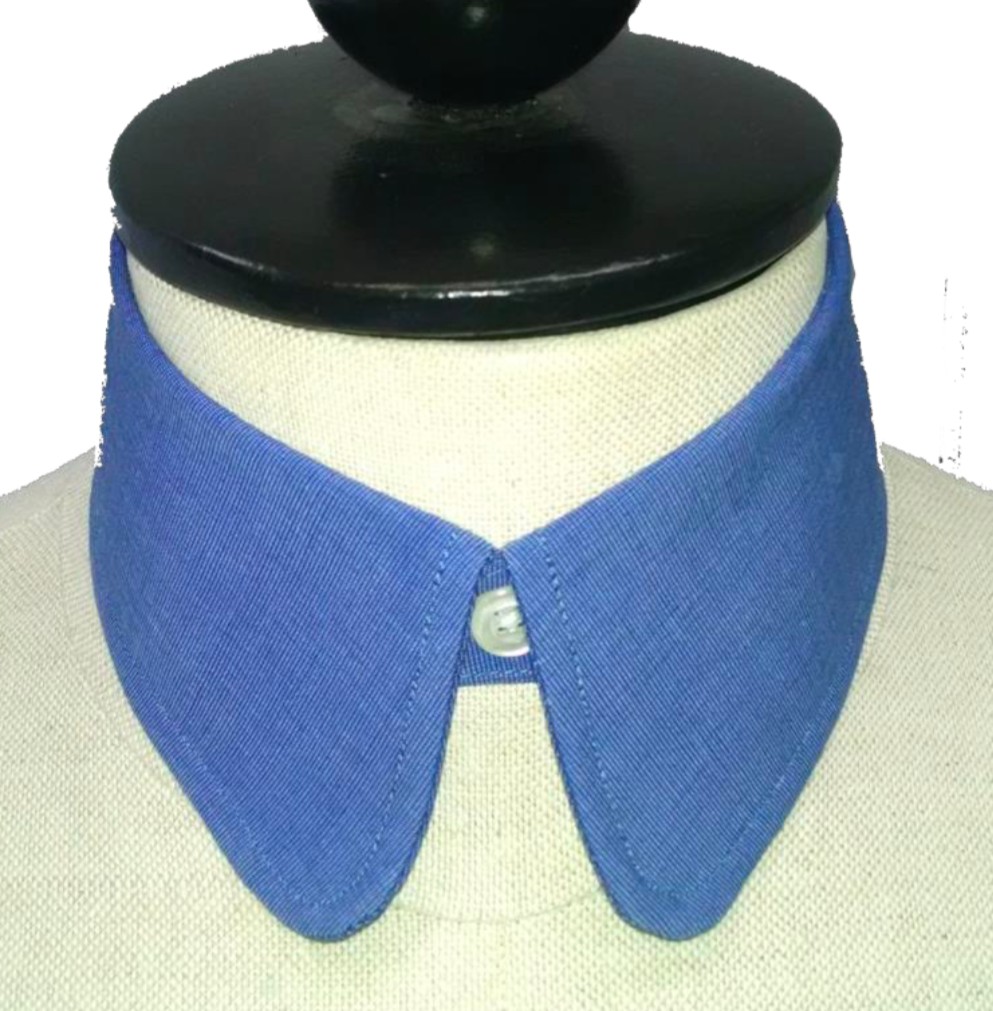 The Eton collar is a highly stylized collar that has rounded points instead of pointed ones. More for vintage enthusiasts than anything else, this collar was popular in the late nineteenth century and is rarely seen today.
The Eton collar is a highly stylized collar that has rounded points instead of pointed ones. More for vintage enthusiasts than anything else, this collar was popular in the late nineteenth century and is rarely seen today.
Tab / Button / Eyelet Collar
If you’ve ever noticed a man with a graceful arc to his tie, that’s because there’s something underneath his tie causing that arc. Collars made with tabs or buttons between the points will craft this look, which tends to work best with smaller tie knots.
Collars with eyelets (pictured in purple gingham above) will result in the same look, but require a collar bar. This is a very bold look and not often seen in the real world, but it gives a man another opportunity to wear jewelry.
More Information On Shirts
If you have any other questions don’t hesitate to reach out and Contact Us, call 215-310-0219 or email us at info@henrydavidsen.com.

